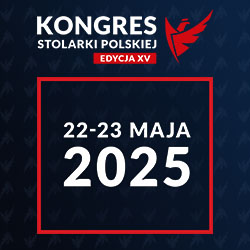Open Access (Artykuł w pliku PDF)
Modelowanie wzmacniania belek żelbetowych za pomocą FRP w programie Ansys
mgr inż. Damian Kowalski, Częstochowa University of Technology, Faculty of Civil Engineering
ORCID: 0000-0002-0257-7644
dr hab. inż. Jacek Selejdak, prof. uczelni, Częstochowa University of Technology, Faculty of Civil Engineering
ORCID: 0000-0001-9854-5962
Adres do korespondencji: Ten adres pocztowy jest chroniony przed spamowaniem. Aby go zobaczyć, konieczne jest włączenie w przeglądarce obsługi JavaScript.
DOI: 10.15199/33.2022.11.54
Case study
Abstract. The purpose of this article is to confirm an accuracy of Cohesive Zone Model (CZM) implemented in Ansys for modelling concrete beams strengthened with fiber reinforced polymer (FRP) tapes. Only mode II of debonding was taken into account, which is sufficient for a case of bent beam strengthened with FRP tape glued to its bottom. Results show satisfying coincidence of used model with experimental data and therefore confirm usefulness of CZM for solving the above mentioned problems.
Keywords: concrete structures; finite elements method; fiber reinforced polymers; Ansys.
Streszczenie. Celem artykułu jest weryfikacja dokładności modelu Cohesive Zone Model (CZM), zaimplementowanego w programie Ansys, w modelowaniu numerycznym belek żelbetowych wzmacnianych taśmami z polimerów zbrojonych włóknami (FRP).Wzięto pod uwagę jedynie postać II utraty przyczepności, co jest wystarczające w przypadku belek zginanych wzmocnionych taśmą przyklejoną do ich spodu. Wyniki pokazują zadowalającą zgodność użytego modelu z danymi eksperymentalnymi i tym samym potwierdzają użyteczność CZM do rozwiązywania ww. zagadnień.
Słowa kluczowe: konstrukcje betonowe; metoda elementów skończonych; polimery wzmacniane włóknami; Ansys.
References
[1] Wu H-C, Eamon CD. Strengthening of Concrete Structures Using Fiber Reinforced Polymers (FRP) Design, Construction and Practical Applications. Elsevier Ltd., 2017.
[2] American Concrete Institute and ACI Committee 440, “Guide for the design and construction of externally bonded FRP systems for strengthening concrete structures,”American Concrete Institute, 2017.
[3] Rasheed. HA. Strengthening Design of Reinforced Concrete with FRP. 2017.
[4] Yu H, Bai YL, Dai JG, Gao WY. Finite element modeling for debonding of FRP-toconcrete interfaces subjected to mixed-mode loading. Polymers (Basel), vol. 9, no. 9, Sep. 2017, doi: 10.3390/polym9090438.
[5] GliszczynskiA,Wiącek N. Experimental and numerical benchmark study of mode II interlaminar fracture toughness of unidirectional GFRP laminates under shear loading using the end-notched flexure (ENF) test. Composite Structures, vol. 258, Feb. 2021, doi: 10.1016/j.compstruct.2020.113190.
[6] Al-Saawani, MA, Al-Negheimish AI, El- Sayed AK, Alhozaimy AM. Finite Element Modeling of Debonding Failures in FRPStrengthened Concrete Beams Using Cohesive Zone Model. Polymers (Basel), vol. 14, no. 9, p. 1889, May 2022, doi: 10.3390/polym14091889.
[7] Matthys S. Structural behaviour and design of concrete members strengthened with externally bonded FRP reinforcement. 1999.
[8] Zreid I, Kaliske M. A gradient enhanced plasticity–damage microplane model for concrete. Computational Mechanics. 2018, doi: 10.1007/s00466-018-1561-1.
[9] Zreid I, Kaliske M. A cyclic triaxial concrete microplanemodel with gradient regularization, in Computationalmodelling of concrete structures : proceedings of the Conference on Computational Modelling of Concrete and Concrete Structures (EURO-C 2018), 26 February 26 - 1March, 2018, Bad Hofgastein, Austria, 2018, pp. 413–420.
[10] Alfano G, Crisfield MA. Finite element interface models for the delamination analysis of laminated composites: mechanical and computational issues. International Journal For NumericalMethods In Engineering Int. J. Numer. Meth. Engng. 2001, vol. 50, pp. 1701–1736.
[11] Lu XZ, Teng JG, Ye LP, Jiang JJ. Bond-slip models for FRP sheets/plates bonded to concrete. Engineering Structures. 2005, vol. 27, no. 6, pp. 920–937, doi: 10.1016/j.engstruct.2005.01.014.
[12] Mostoonejad D, Hosseini SJ. Simulating FRP debonding from concrete surface in FRP strengthened RC beams: A case study. 2017. [Online]. Available: www.scientiairanica.com
[13] Li G, Zhang A, Jin W. Effect of shear resistance on flexural debonding load-carrying capacity of RC beams strengthened with externally bonded FRP composites. Polymers (Basel). 2014, vol. 6, no. 5, pp. 1366–1380, doi: 10.3390/polym6051366.
[14] Neto P, Alfaiate J, Vinagre J. Modelling the behaviour of reinforced concrete beams strengthenedwith FRP, in III European Conference on Computational Mechanics Solids, Structures and Coupled Problems in Engineering, Jun. 2006.
[15] Mohammadi S, Mousavi Khandan AA. Numerical modeling of RC beams strengthened with CFRP under dynamic loading.
Przyjęto do druku: 07.10.2022 r.
Materiały Budowlane 11/2022, strona 188-191 (spis treści >>)
































